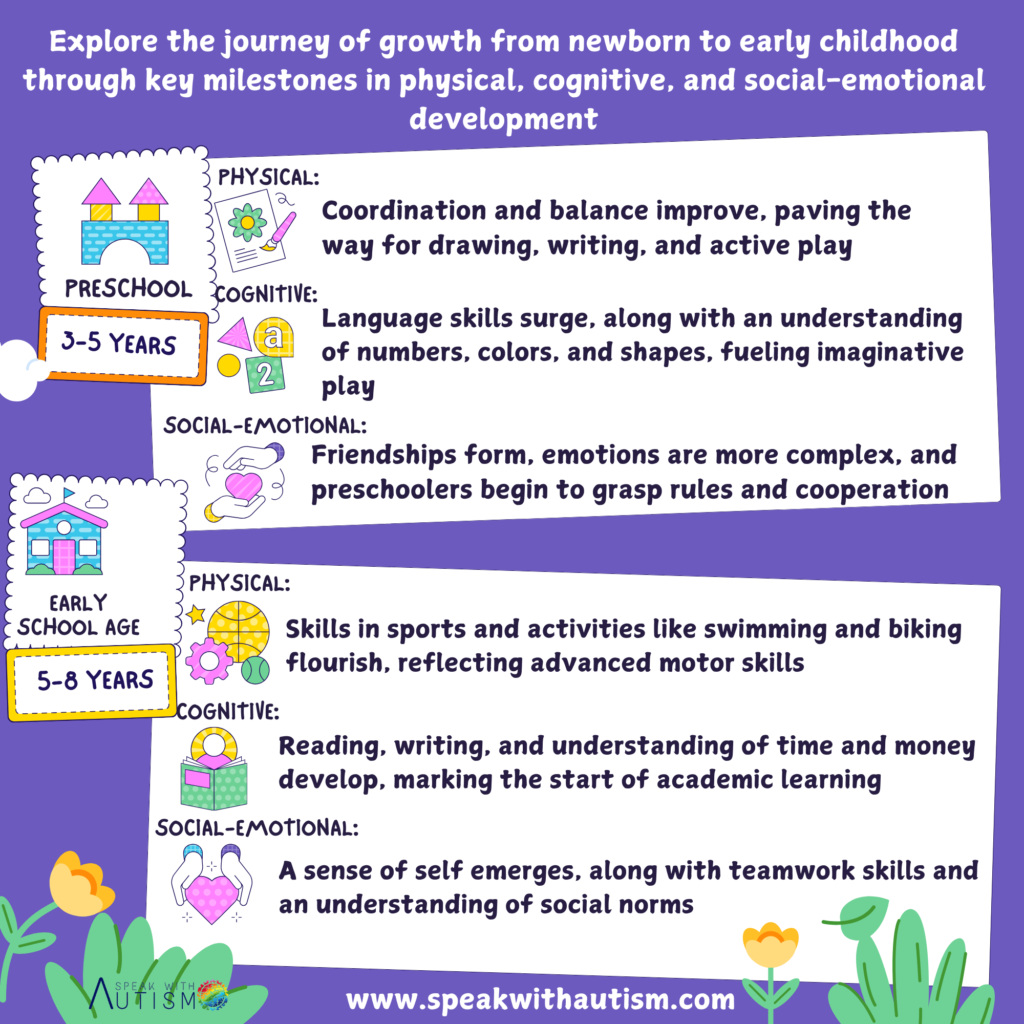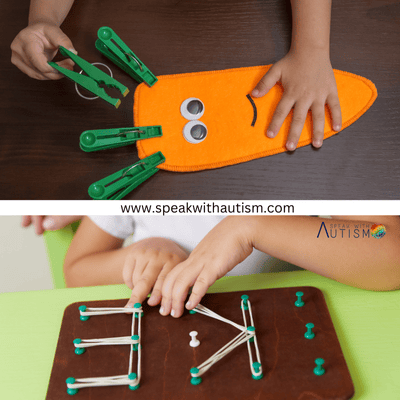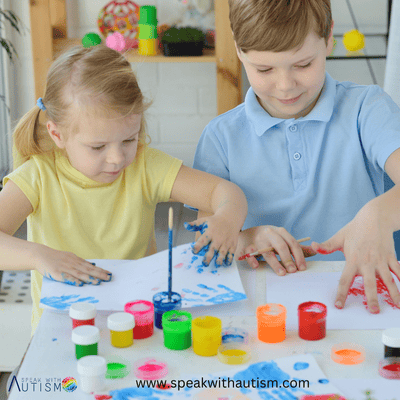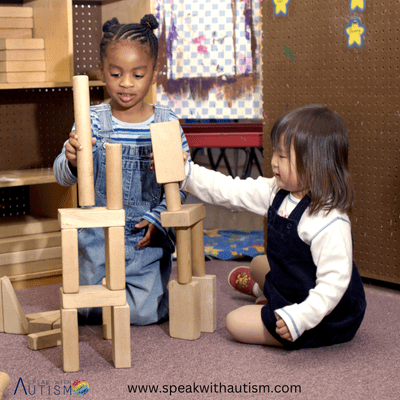Imitation skills are fundamental skills that help children learn and grow socially, emotionally, and intellectually. Many games, activities, and life skills are acquired through imitation. If your child struggles with imitation, they may face challenges in understanding play, leisure skills, or social interactions. This blog will guide you through teaching imitation skills to your child, helping them thrive in various developmental areas.
Table of Contents
Why Imitation Is Important
- Social Development: Imitation helps children learn social norms and behavior by observing and mimicking others.
- Language Development: Children pick up words, phrases, and expressions by imitating parents, teachers, or friends.
- Motor Skill Development: Activities like clapping, waving, or building blocks strengthen both fine and gross motor skills.
- Play Skills: Games like Ludo, Carrom, or Musical Chairs rely heavily on a child’s ability to imitate actions and follow instructions.
Levels of Imitation
There are certain basic parameters for a child’s growth and development. If your child is unable to achieve the physical, cognitive, and social-emotional milestones as shown in age-specific charts, it could be a significant sign of autism, ADHD (Attention deficit hyperactivity disorder), or other developmental issues. In such cases, it is crucial to consult a developmental pediatrician.

When working on imitation skills, understanding your child’s developmental stages is extremely important. Imitation means copying, and if your child struggles to imitate your gestures, this could be a major symptom of autism.

1. Object Imitation
- Start with simple tasks involving objects.
- Example: Place two glasses in front of you and your child. Say, “Do the same,” while lifting your glass. Avoid giving complex instructions like “Drink water.”
- Gradually increase complexity, like stacking blocks or using objects creatively.
Key Tips:
- Keep instructions short and clear.
- Use praise like “Very good!” or “Well done!” to motivate your child.
2. Fine Motor Imitation
- Use activities that engage small muscles.
- Example: Ask your child to copy actions by giving these type of instructions “Do this” “Do follow” “Do same” don’t give complex instructions initially.
- Progress to more detailed tasks, such as threading beads or drawing shapes.


Key Tips:
- Demonstrate slowly and repeat actions.
- Add challenges progressively, like making patterns or sequencing movements.
3. Gross Motor Imitation
- Focus on whole-body movements.
- Example: Clap hands, tap feet, or wave arms. Say, “Do this,” and perform the action.
- Combine actions with music to make it fun. For example: “Listen to the music and turn around,” or “Wave your hands to the beat.”
Key Tips:
- Use songs and rhymes with actions to engage your child.
- Encourage them to follow simple dance moves or movements like jumping, turning, or bending.
- Do Practical Activities for Teaching Imitation.
4. Play-Based Imitation
- Engage your child in games like Simon Says, where they follow your actions.
- Use props like a toy train, blocks, or a pencil to make the activities relatable and exciting.
5. Daily Routine Imitation
- Incorporate imitation into everyday tasks.
- Example: Sharpen a pencil while your child watches, then hand them a pencil and encourage them to try.
6. Rhymes and Songs


- Use action-based rhymes like “If You’re Happy and You Know It” to make learning interactive and enjoyable.
- Encourage your child to copy the clapping, tapping, or waving actions in the rhyme.
Tips for Success
- Build Eye Contact: Help your child focus by ensuring they look at you before starting any activity.
- Start Simple: Begin with easy actions and gradually increase the complexity.
- Be Patient: Learning imitation takes time, especially for children with developmental challenges.
- Use Rewards: Praise, clapping, or a small treat can motivate your child to imitate consistently.
- Stay Consistent: Practice daily and integrate imitation into multiple activities.
Conclusion
Teaching imitation skills is essential for your child’s overall development. By focusing on object, fine motor, and gross motor imitation, you lay the foundation for improved social, language, and play skills. Be patient, use engaging methods, and celebrate small achievements. With consistent efforts, your child will build these skills and become more confident and independent.
Let’s work together to make learning fun and meaningful for our little ones!
Frequently Asked Questions
How to gear up your child academically and help them remember answers?
If your child is a visual learner, use practical and visual methods to teach concepts. For example, if the topic is “Nuclear Family,” use a picture of a joint family to explain the difference visually. Avoid open-ended questions if auditory processing is a challenge. Instead, focus on visual aids and practical demonstrations.
How to stay motivated as a parent when there’s little progress?
Follow a holistic approach that combines special education, body gym, brain gym, occupational therapy, and speech sessions. If one method doesn’t work, another might. Educate yourself and remember that improvement takes time. Focus on independent skills like tidying up after meals or putting toys away, which can also enhance coordination and self-reliance.
Can older children still show improvement?
Improvement is possible at any age. Even a 28-year-old or 36-year-old can make progress with consistent efforts. For younger children, progress might happen faster due to their brain’s flexibility. For older children, the process involves more unlearning and reprogramming, but it is achievable.
My child is nonverbal. How should I start?
Start with object imitation, gesture imitation, and sound imitation. Work on oral motor muscles by encouraging blowing and sucking activities to improve speech readiness. Motivation is key—use high-value reinforcers. For instance, use a “mand training” approach where you encourage the child to request items by naming them.
Create a setup with three boxes containing favorite snacks (e.g., makhana, pistachios). Teach your child that everything has a name, and they must use the correct word or sound to get the item. Even small steps like these build the foundation for speech.
How to manage distraction and inattentiveness?
Addressing attention issues indirectly often yields better results than working directly on them. Include activities like skipping, therapy exercises, and crossing-the-midline tasks to regulate your child before attempting table-top activities. Always incorporate movement and sensory exercises to prepare the body and mind for learning.
How to deal with Toilet and potty training challenges?
Begin by working on reflex integration and core strengthening exercises. Activities like flexion-extension exercises and pelvic dragging can activate introspective senses, helping the brain process the sensation of pressure. Use visual aids like pictures of a toilet to reinforce the concept and provide a clear routine.
Which is better Group sessions vs. school for socialization for autistic children?
Group sessions vs. school for socialization:
Group sessions are generally better for children with sensory processing challenges. Schools can be overwhelming due to the sensory overload from crowds, noise, and visual input. Before enrolling your child in school, ensure they can sit in group sessions for at least 30 minutes without distress. Trial sessions are highly recommended.
If Parent training necessary to deal with Autistic children in-house?
Parental training is crucial. You need to understand your child’s sensory needs, motivations, strengths, and weaknesses. Work on these areas alongside therapists. Trust your child, your therapist, and, most importantly, yourself. Take breaks and remain calm. Only when you are composed you can effectively support your child.
Why it is important for parents to work consistently with their children with developmental difficulties
When dealing with developmental delays, autism, learning disabilities, or managing home plans and therapy, consistency is key. Despite knowing the strategies and rules, managing meltdowns can often feel overwhelming. Prolonged crying, stress, and reduced concentration may make it seem not easy to move forward.
If your child has made progress in the past, revisit the exercises and activities that have worked for them before. These familiar routines can help regulate their emotions and behavior. Most importantly, approach your child with empathy rather than judgment. A supportive and understanding attitude can make a significant difference in their progress and your ability to manage challenges.
